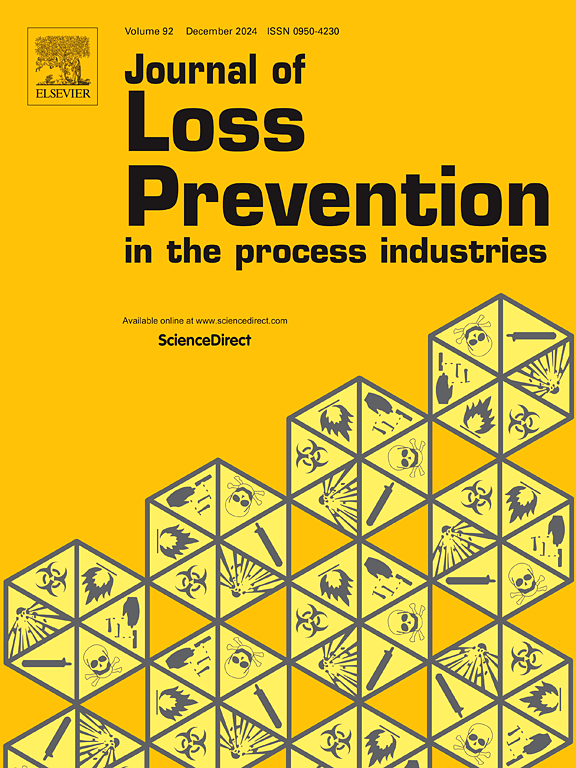Experimental study on flame propagation suppression characteristics of Ti-6Al-4V titanium alloy dust
IF 4.2
3区 工程技术
Q2 ENGINEERING, CHEMICAL
Journal of Loss Prevention in The Process Industries
Pub Date : 2025-07-03
DOI:10.1016/j.jlp.2025.105733
引用次数: 0
Abstract
Ti-6Al-4V (TC4) titanium alloy, a widely utilized titanium-based material, exhibits exceptional mechanical properties and corrosion resistance, making it indispensable in aerospace, biomedical, and chemical process applications. However, in fine particulate form, it presents significant combustibility and explosion hazards. To enhance safety protocols and industrial explosion prevention strategies for TC4 titanium alloy dusts, this study investigates the suppression effects of melamine pyrophosphate (MPP), CaCO3, and TiO2 on flame propagation characteristics using an improved Hartmann tube apparatus. The explosion suppression mechanisms of these three agents are analyzed through detailed explosion residue examination. The results indicate that as suppressant content increases, flame fronts gradually transform into regular parabolic shapes, while bright luminous regions progressively contract until dust extinction occurs. The presence of suppressants significantly reduces the flame propagation velocity of the mixed dust. With increasing suppressant concentration, the time required for flame propagation velocity to reach its peak increases, while the maximum flame propagation velocity continuously decreases. MPP suppresses TC4 titanium dust explosions through both physical mechanisms (heat transmission, cooling, and hindering oxygen) and chemical mechanisms through capturing free radicals within chemical reaction. In contrast, suppression effects of CaCO3 and TiO2 on TC4 titanium alloy dust explosion primarily manifest through physical mechanisms such as cooling, impeding oxygen, and heat transfer.
Ti-6Al-4V钛合金粉尘火焰传播抑制特性实验研究
Ti-6Al-4V (TC4)钛合金是一种广泛应用的钛基材料,具有优异的机械性能和耐腐蚀性,在航空航天、生物医学和化学工艺应用中不可或缺。然而,在细颗粒形式下,它具有显著的可燃性和爆炸危险。为了加强TC4钛合金粉尘的安全协议和工业防爆策略,本研究采用改进的Hartmann管装置,研究了三聚氰胺焦磷酸(MPP)、CaCO3和TiO2对火焰传播特性的抑制作用。通过详细的爆炸残留物检测,分析了这三种药剂的抑爆机理。结果表明,随着抑制剂含量的增加,火焰锋面逐渐转变为规则的抛物线形状,明亮的发光区域逐渐缩小,直至尘埃熄灭。抑制剂的存在显著降低了混合粉尘的火焰传播速度。随着抑制剂浓度的增加,火焰传播速度达到峰值所需的时间增加,而最大火焰传播速度不断减小。MPP通过物理机制(传热、冷却、阻氧)和化学机制(捕获化学反应中的自由基)抑制TC4钛尘爆炸。相比之下,CaCO3和TiO2对TC4钛合金粉尘爆炸的抑制作用主要通过冷却、阻氧和传热等物理机制来表现。
本文章由计算机程序翻译,如有差异,请以英文原文为准。
求助全文
约1分钟内获得全文
求助全文
来源期刊
CiteScore
7.20
自引率
14.30%
发文量
226
审稿时长
52 days
期刊介绍:
The broad scope of the journal is process safety. Process safety is defined as the prevention and mitigation of process-related injuries and damage arising from process incidents involving fire, explosion and toxic release. Such undesired events occur in the process industries during the use, storage, manufacture, handling, and transportation of highly hazardous chemicals.

 求助内容:
求助内容: 应助结果提醒方式:
应助结果提醒方式:


